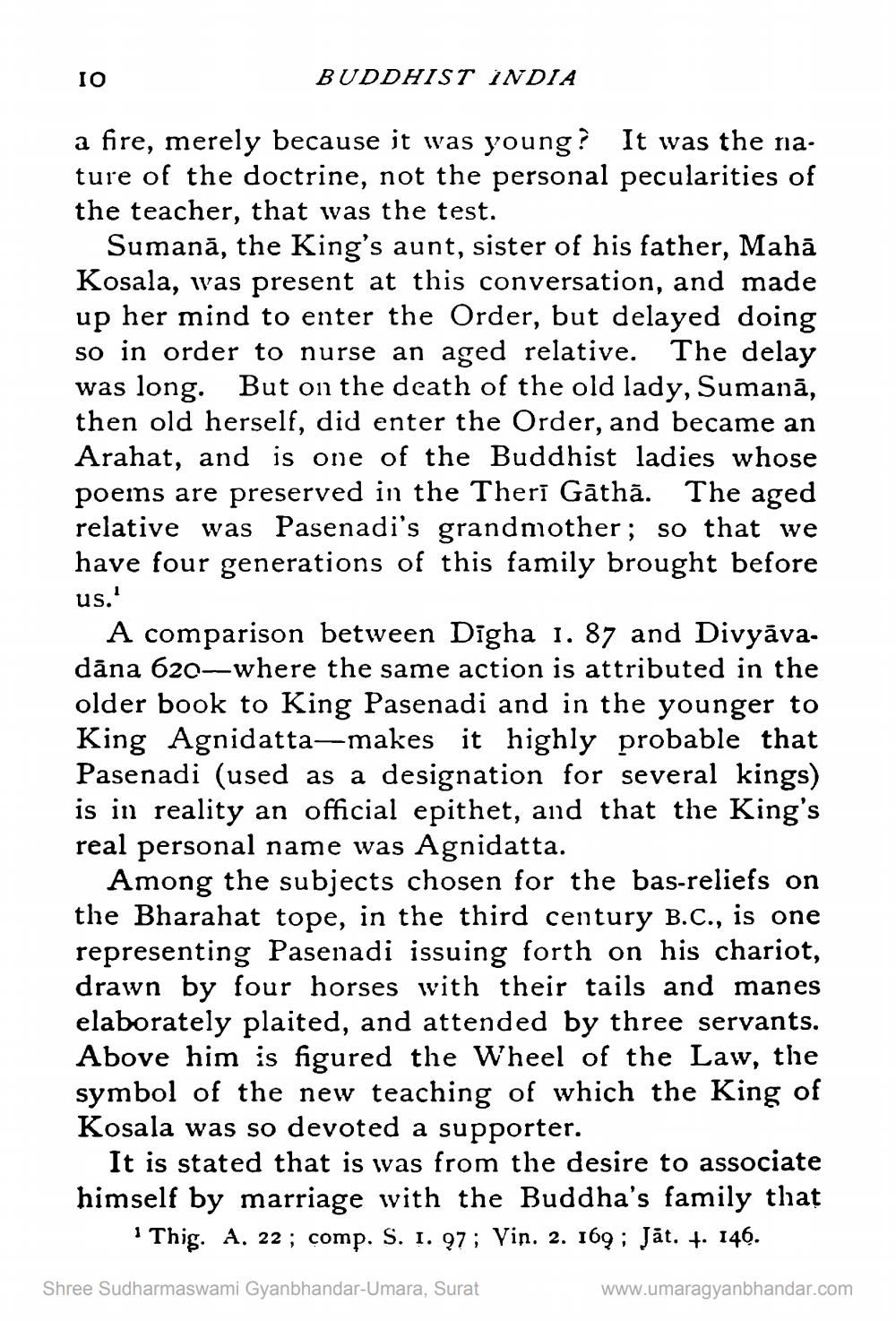________________
IO
BUDDHIST INDIA
a fire, merely because it was young? It was the nature of the doctrine, not the personal pecularities of the teacher, that was the test.
Sumanā, the King's aunt, sister of his father, Mahā Kosala, was present at this conversation, and made up her mind to enter the Order, but delayed doing so in order to nurse an aged relative. The delay was long. But on the death of the old lady, Sumanā, then old herself, did enter the Order, and became an Arahat, and is one of the Buddhist ladies whose poems are preserved in the Therī Gātha. The aged relative was Pasenadi's grandmother; so that we have four generations of this family brought before us.'
A comparison between Digha 1. 87 and Divyāva. dāna 620—where the same action is attributed in the older book to King Pasenadi and in the younger to King Agnidatta—makes it highly probable that Pasenadi (used as a designation for several kings) is in reality an official epithet, and that the King's real personal name was Agnidatta.
Among the subjects chosen for the bas-reliefs on the Bharahat tope, in the third century B.C., is one representing Pasenadi issuing forth on his chariot, drawn by four horses with their tails and manes elaborately plaited, and attended by three servants. Above him is figured the Wheel of the Law, the symbol of the new teaching of which the King of Kosala was so devoted a supporter.
It is stated that is was from the desire to associate himself by marriage with the Buddha's family that
* Thig. A. 22 ; comp. S. 1. 97; Vin. 2. 169; Jät. t. 146.
Shree Sudharmaswami Gyanbhandar-Umara, Surat
www.umaragyanbhandar.com




